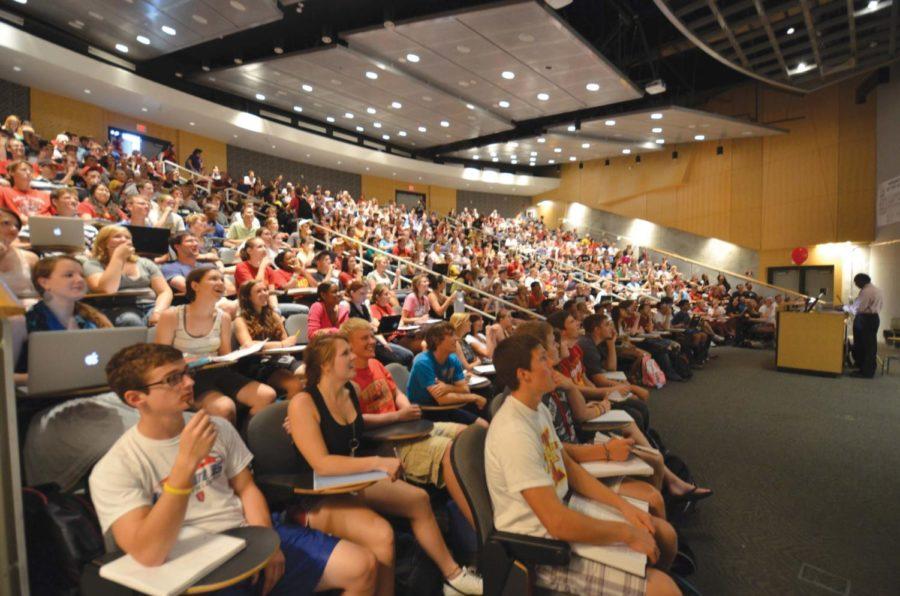The course availability group discusses scheduling despite growth
December 4, 2014
An early morning Saturday class isn’t something freshmen Adam Pick and Micah Kelsay would consider ideal.
But with the increased enrollment, it’s something Iowa State once asked students to consider to compensate for the lack of classroom space and time availability.
A course availability group meets monthly to look at forecasted enrollment numbers and match projected number of majors with seats in necessary courses. The group includes representatives from every college, classroom scheduling, dean of student’s office and more.
Arne Hallam, associate dean of finance and operations with the College of Liberal Arts and Sciences, shared how the group uses a forecast of student enrollment in each major as a data-intensive process to schedule classes at the Board of Regents meeting Dec. 3.
“With record enrollment over the past number of years, how we are making sure students are getting into the courses they need to get to graduate?” said ISU provost Jonathan Wickert.
Hallam attributed enrollment growth to ISU graduates obtaining jobs in desired fields, especially in the engineering and agriculture fields.
“The jobs students are studying for at Iowa State have very good employment records,” he said.
Increased retention rates and an agreement to get first-year and transfer students into desired courses their first year are also factors, he said.
The group works with the registrar’s office during summer orientation because new students are signing up for their classes. When the office sees an influx of students in a certain area, they usually try to let the planning group know to make accommodations.
Course enrollments have increased from 234,860 in 2008, to about 314,000 in fall 2014. The number of available seats have increased from about 303,400 to 397,500.
Hallam gave an example from two or three years ago when an enrollment forecast showed there would most likely not be enough biology labs to teach the number of students who wanted to be enrolled in biology. So the group turned a few classrooms into biology labs and turned an abandoned chemistry lab space into classrooms.
Kelsay and Pick, both freshmen in pre-business, said they got into their desired general education courses. Pick, though, said he wasn’t able to get into math or English courses for next semester because they were already full by the time he was able to sign up.
“Those are the key ones and they were already full,” Pick said.
Hallam said the five areas that are the most difficult to plan for are math, physics, chemistry, biology and English.
The biggest difficulty in scheduling classes has been finding the space, Hallam said.
“We don’t have extra space on this campus,” he said.
Science labs are already open from 7 a.m. to 10 p.m., causing a shuffle of other classes, such as those in English. The extended class hours have also spurred the university to add more CyRide running times. And when the university tried out Saturday morning classes, the idea “did not do well with students,” Hallam said, because football season had high fan interest.
Kelsay said he definitely wouldn’t prefer to take a Saturday morning class.
“I would try to avoid it,” Kelsay said, “but worst case scenario, I would take it.”







